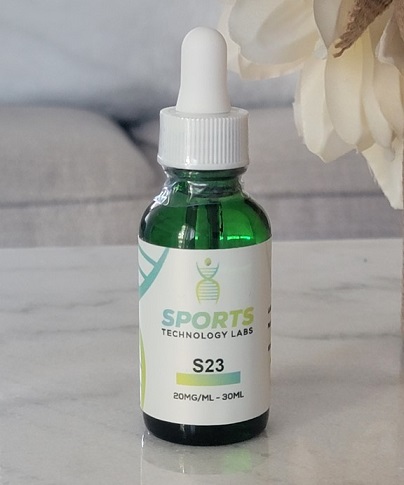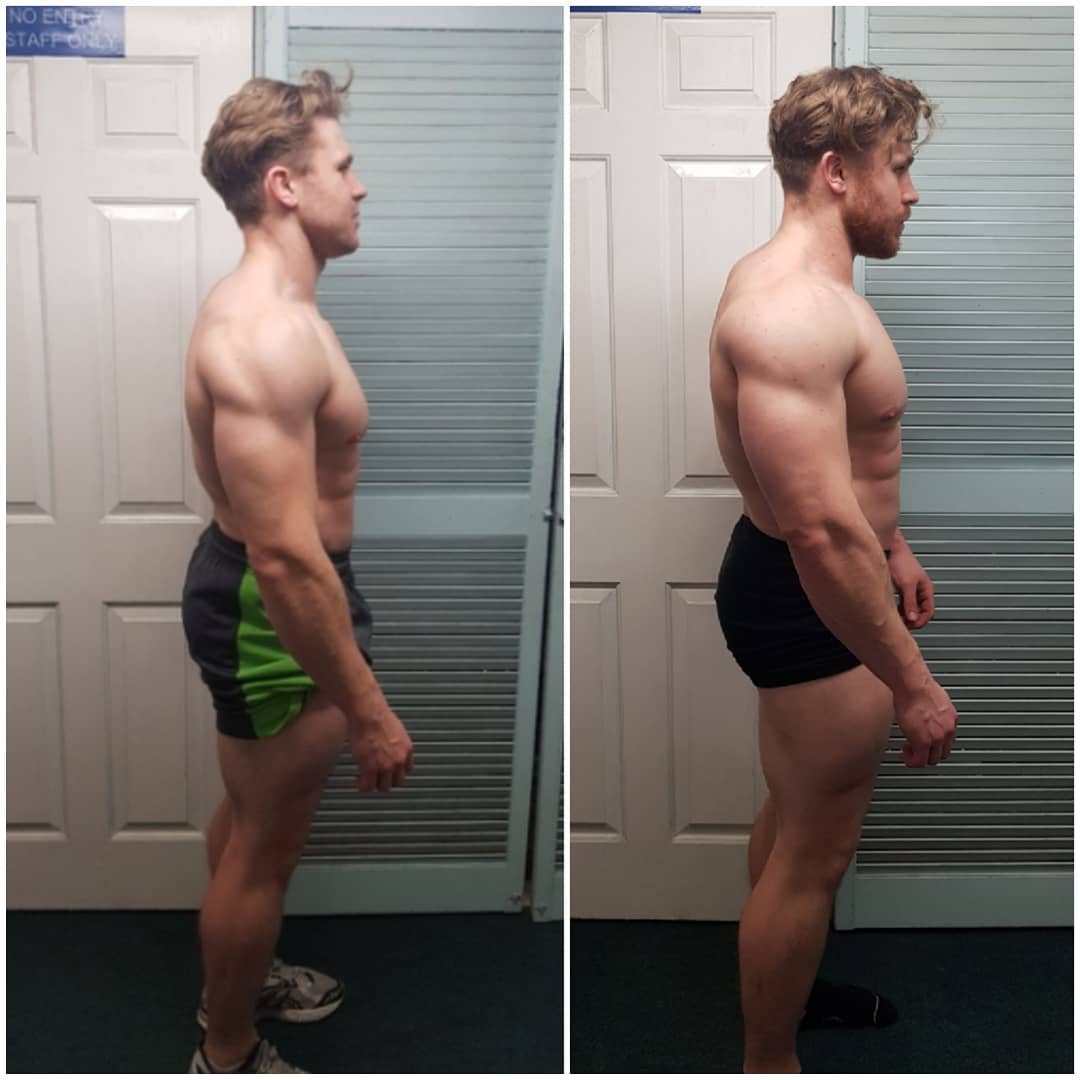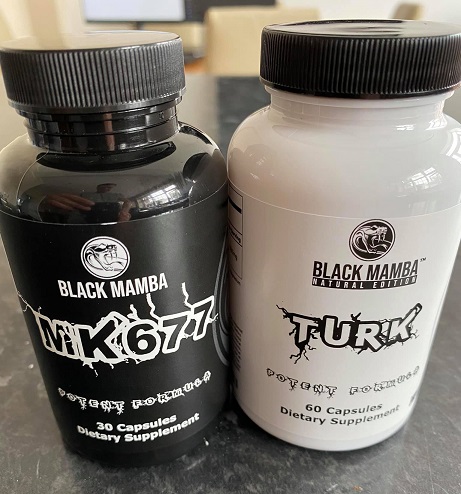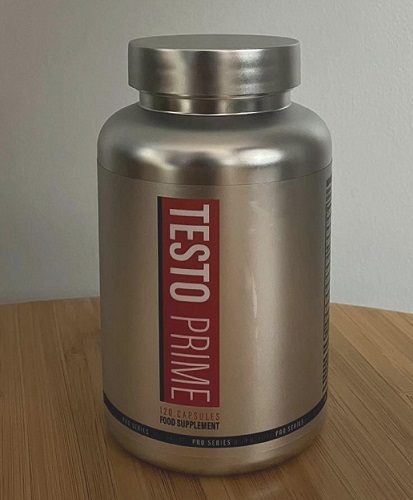Disclaimer: The following article is for educational purposes only and does not promote the use of illegal steroids. If you have any questions or concerns, Dr. Touliatos is currently available for consultation.
Today, anabolic steroids are gaining popularity; however, they are still considered taboo in sports and society because of their severe adverse effects.
Consequentially, a significant number of weightlifters are in search of a substance that can replicate the anabolic effects of steroids but with a less severe side effect.
The same is also being sought by scientists in an effort to treat cachexia (muscle atrophy) with less toxicity for patients.
Chemically, the potent anabolic (muscle building) and lipolytic (fat burning) effects of anabolic steroids are due to them both being exogenous forms of testosterone.
Thus, in theory, if a supplement could significantly increase testosterone levels to the same degree as steroids, it would also mimic their results.
However, doing so would also yield a similar amount of side effects.
Thus, in order to experience the results of steroids, users need to be willing to endure harsh side effects.
Nevertheless, there are specific supplements (or compounds) that can be beneficial for individuals who are prepared to accept fewer gains in exchange for more tolerable side effects.
Note: Mild supplements that have little effect are not included below. Instead, the following are potent supplements or compounds that we have seen work significantly.
1. SARMs

SARMs (selective androgen receptor modulators) are medicine’s attempt to create superior compounds to anabolic steroids.
SARMs work by binding to the androgen receptor and thus increasing testosterone levels, but with unique tissue selectivity.
Thus, in theory, SARMs replicate the muscle-building effects of anabolic steroids but without the adverse effects, such as hypertrophy of the prostate, hypertension, or hepatotoxicity.
Unfortunately, in practice, SARMs can produce harsh side effects that may not only equal anabolic steroids but also surpass their toxicity level.
Dr. Thomas O’Connor, part of our medical team, has hypothesized that SARMs are more dangerous than anabolic steroids. His verdict is based on 10 years of anecdotal evidence and the analysis of 2,000 patients’ labs.
In medical research, two men experienced SARM-induced hepatocellular-cholestatic injuries (1). This was the consequence of taking LGD-4033 for 9 weeks and RAD-140 for just 4 weeks.
Dr. O’Connor has also observed SARMs to have deleterious effects on HDL (high-density lipoprotein) cholesterol while causing moderate damage to the HPTA (hypothalamic-pituitary-testicular axis), resulting in temporary (yet significant) testosterone suppression.
Furthermore, the positive effects of SARMs may not be as extreme compared to anabolic steroids, with modest increases in muscle hypertrophy being experienced in clinical research (2). In one study, SARM users gained 1–1.5 kg of lean mass in a 4-6-week period.
In contrast, users taking testosterone enanthate gained 5–7 kg.
Thus, SARMs may only produce a portion of the results of anabolic steroids, but with potentially similar harsh side effects.
SARMs’ mild positive effects on body composition in research also correlate with our real-life observations of SARM users’ before and after transformations.

Bodybuilders typically purchase SARMs online or from people they know. SARMs are currently legal for chemical research, i.e., administering them to mice and monitoring the results. However, they are illegal for humans to administer for cosmetic purposes.
SARMs Pros
- Notable increases in muscle hypertrophy and fat loss
- Significant increases in strength
SARMs Cons
- Illegal to purchase (for non-research purposes)
- Potentially harsh side effects
- Numerous SARM products have been found to be tainted
- Not as potent as anabolic steroids
- Bodybuilders will lose their natural status.
2. Turkesterone

Turkesterone is an ecdysteroid, a natural steroid hormone in plants and insects.
Thus, it could be likened to the plant/insect equivalent of testosterone.
Turkesterone can be extracted via natural means, thus it is suitable for natural bodybuilders. It is also 100% legal to purchase and has not been banned by any sporting federation.
In terms of research, turkesterone has been shown to exhibit significant anabolic effects.
The study that got everyone’s attention was conducted by Syrov, V. N., in 2000. Syrov was testing the anabolic effects of various phytoecdysteroids and steranabols in male rats, and he found turkesterone produced greater total weight gain than Dianabol.
These results are unique considering turkesterone is a natural substance, compared to Dianabol (methandrostenolone) being an anabolic steroid.
Turkesterone also promotes lean weight gain as opposed to Dianabol, which causes notable amounts of water retention.
However, as this study was conducted on rodent models, some remain skeptical of turkesterone until it is found effective in humans.
Turkesterone has not yet been clinically tested in humans. Thus, with limited research, we do not know whether turkesterone can produce steroid-like effects in natural bodybuilders.
Anecdotally, we have had bodybuilders report up to 12 lbs of muscle gain, and others experience no visible results. Thus, turkesterone’s results could be dependent on the quality of the supplement and whether the user is a hyperresponder.
Turkesterone does not bind to the androgen receptor, preventing significant decreases in endogenous testosterone. Therefore, we have seen natural testosterone levels remain stable on turkesterone, and the typical side effects of anabolic steroids, such as cardiotoxicity, hepatoxicity, gynecomastia, etc., do not occur.
Turkesterone Pros
- Notable increases in muscle mass, fat loss, and strength (in some users)
- No obvious side effects
- Legal and natural
Turkesterone Cons
- There is a lack of clinical research to confirm any steroid-like effects.
3. Ecdysterone
Ecdysterone is an ecdysteroid, similar to turkesterone, and the two share very similar chemical structures.
There is additional research conducted on ecdysterone, enabling a greater understanding of its potential anabolic properties (compared to turkesterone).
However, the research on ecdysterone is conflicting in both animal and human studies, demonstrating both positive and negative outcomes.
In the 2000 study conducted by Syrov, V. N., the data showed that ecdysterone produced significant weight gain in the rodents, albeit less than turkesterone. This may indicate that turkesterone is the more potent of the two ecdysteroids.
In 2006, the first human ecdysterone study was published. 45 weight-trained males were split into 4 groups (3).
Three of the groups took the following substances:
- Ecdysterone
- Methoxyisoflavone
- Sulfo-polysaccharides
The fourth group took a placebo.
However, the results showed no notable improvements in each of the groups when recording serum testosterone levels, one rep max, or fat-free mass.
However, three years later, in 2019, a second ecdysterone study was published (4).
46 men with 1 year of weight training experience were split into 3 groups. Group 1 received a moderate dose of ecdysterone (2 x 100 mg tablets), Group 2 received a high dose of ecdysterone (8 x 100 mg tablets), and Group 3 received a placebo.
The researchers found that the groups taking ecdysterone gained significant amounts of muscle mass compared to the placebo.
Interestingly, the higher-dosed ecdysterone group also gained notably more mass than the moderate-dosed ecdysterone group.
An analysis was conducted on the contents of the ecdysterone supplement, and the researchers found no banned substances in the pills. However, they found only a fraction of ecdysterone was truly present in each pill (6%).
Only 6 mg of ecdysterone was in each pill, compared to the 100 mg listed on the bottle.
Thus, a definitive conclusion about ecdysterone solely being the culprit for their results is dubious. However, such results were still enough for researchers to call for the banning of ecdysterone in sports.
However, ecdysterone is not currently on the prohibited list of WADA or other sporting federations.
Further research is required for ecdysterone to be viewed as a supplement with anabolic effects. At this early stage, however, there is promise.
Ecdysterone Pros
- Natural supplement
- No obvious side effects
- Significantly anabolic in humans (in one study)
Ecdysterone Cons
- Yet to be proven scientifically (due to a lack of research).
- Likely to be less effective than turkesterone.
4. HGH (Human Growth Hormone)
HGH is not an anabolic steroid, although it mimics several of steroids’ properties, such as fat loss, muscle hypertrophy, strength, and endurance.
HGH is a peptide hormone commonly utilized by bodybuilders wanting to take their physique to the next level.
We observe the proportion of muscle-building and fat loss to be dissimilar to anabolic steroids, with HGH demonstrating enhanced lipolytic (fat-burning) effects than anabolic (muscle-building).
Thus, HGH may be more effective than anabolic steroids for reductions in fat mass but less effective for muscle hypertrophy.

A typical HGH transformation
Furthermore, HGH does not cause testosterone suppression post-cycle, thus a PCT (post-cycle therapy) is unnecessary.
Although exogenous HGH causes (temporary) declines in endogenous HGH levels, we have found these to recover in a matter of days post-cycle.
In contrast, we commonly observe damage to the HPTA from a steroid cycle, causing low endogenous testosterone levels for several weeks or months after.
Our patients who have taken HGH still experience several side effects (similar to anabolic steroids), including an increased likelihood of heart disease (left ventricular hypertrophy) and type 2 diabetes.
HGH may also be carcinogenic (5), with Dr. Thomas O’Connor observing the following cancers transpire in patients that had regularly cycled the compound:
- Melanomas
- Esophageal cancers
- Brain cancers
- Heart tumor (single case)
- Gastrointestinal tract cancer
It is possible that HGH could increase a user’s risk of cancer due to it raising IGF-1 levels (a surrogate marker for cancer).
Furthermore, HGH can cause a protruding effect on the abdomen, also known as HGH gut, due to an increase in visceral fat, causing a bloated appearance to the midsection.
Anabolic steroids can also cause this same appearance in the abdomen; however, we have found it to be less pronounced than HGH. We hypothesize the difference to be attributed to HGH causing greater fluctuations in insulin and blood sugar levels (6).
HGH is not currently approved for cosmetic use, and thus bodybuilders often purchase it via the black market. Prescriptions are only possible if a person has clinically low endogenous HGH levels.
HGH Pros
- Significant fat loss
- Mild muscle hypertrophy
- Anti-aging
HGH Cons
- HGH gut
- Illegal (unless medically prescribed)
- Several adverse side effects
- Bodybuilders will lose their natural status.
5. Testosterone Boosters

Natural bodybuilders wanting to operate within the confines of the law may take testosterone boosters. Several popular ingredients include d-aspartic acid, tribulus terrestris, and ZMA.
Existing research suggests such herbs and amino acids exhibit positive effects on testosterone levels (7); however, they are unlikely to cause exceptional elevations.
There may be a few hyper-responders to certain testosterone boosters, causing them to gain 10 lbs of lean mass from approximately 4–8 weeks of supplementation. However, this is not typical, and for most users, a fraction of this is likely to be the outcome.
Other natural supplements, such as protein powders, creatine, and BCAAs, will not yield steroid-like results.
Testosterone Booster Pros:
- Very safe (no side effects)
- Natural
- Clinically proven to increase testosterone levels
Testosterone Booster Cons:
- Minimal to moderate increases in muscle hypertrophy
Testosterone boosters contain natural, FDA-approved ingredients and are legal; thus, they can be easily purchased online or over the counter.
FAQ
Anabolic Steroids vs. Natural Supplements
The answer to this is subjective.
We have patients wanting to be as muscular as possible for cosmetic purposes, and they are satisfied with risking their health and living a potentially shorter life.
In this case, anabolic steroids are their desired option.
However, other patients want to optimize their health and are focused on longevity. We see them experience greater happiness and success with natural supplements.
We understand that men and women who aspire to compete in bodybuilding professionally may have limited options, as genetics, training, and diet can only build limited amounts of muscle.
Equally, there are natural bodybuilders happy to compete in low-profile competitions with minimal prize money.
Can You Safely Take Steroids?
Anabolic steroids are not generally safe for human consumption, outside the confines of medicine.
However, doctors prescribe anabolic steroids to patients with cachexia and osteoporosis; thus, we believe it is possible to administer AAS with some degree of safety when under expert medical care and taken in therapeutic dosages.
However, this only applies to a select number of anabolic steroids that are FDA-approved and used medicinally (such as Testosterone, Deca Durabolin, and Anadrol). Other anabolic steroids are not approved or prescribed due to high levels of toxicity.
Conclusion
Generally, the positive effects of anabolic steroids are unrivaled by natural supplements.
Creatine, protein, and amino acids can have a positive effect on body composition, yet the results are incomparable to anabolic steroids.
SARMs and HGH are potentially the closest compounds to anabolic steroids we have seen in our clinic, with them mimicking the muscle-building and fat-burning properties (with some side effects).
Turkesterone and ecdysterone are among the best supplements for those wanting to remain natural.
Anabolic steroids should be discouraged due to their potentially dangerous adverse effects. However, if AAS (anabolic-androgenic steroids) are to be taken, mild AAS may be less toxic than some alternative compounds, such as SARMs.
Co Authors :
(1) https://aasldpubs.onlinelibrary.wiley.com/doi/full/10.1002/hep4.1456
(2) https://www.ncbi.nlm.nih.gov/pmc/articles/PMC2907129/
(3) https://pubmed.ncbi.nlm.nih.gov/18500969/
(4) https://pubmed.ncbi.nlm.nih.gov/31123801/
(5) https://academic.oup.com/edrv/article/40/2/558/5214057
(6) https://www.ncbi.nlm.nih.gov/pmc/articles/PMC5642081/
(7) https://www.ncbi.nlm.nih.gov/pmc/articles/PMC5571970/


